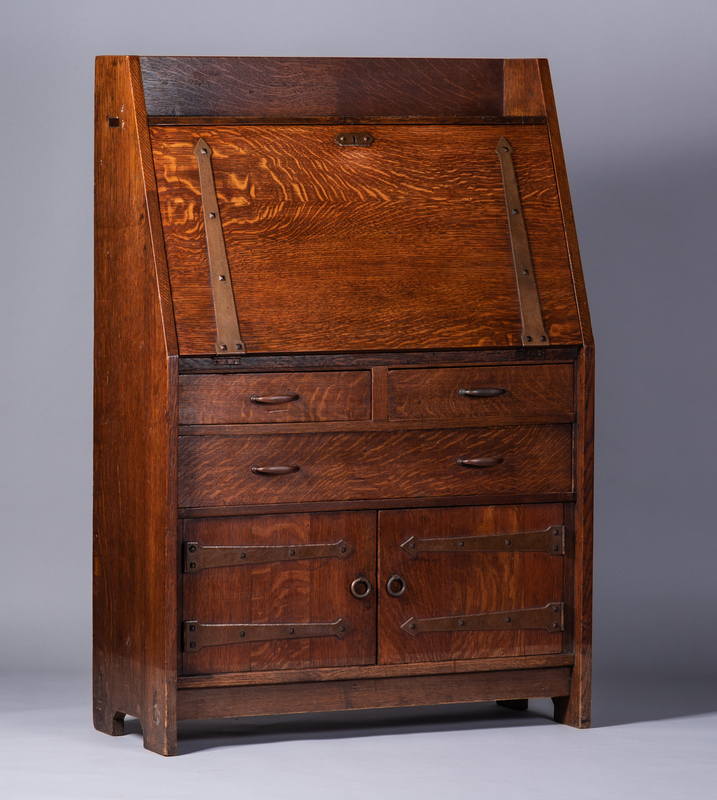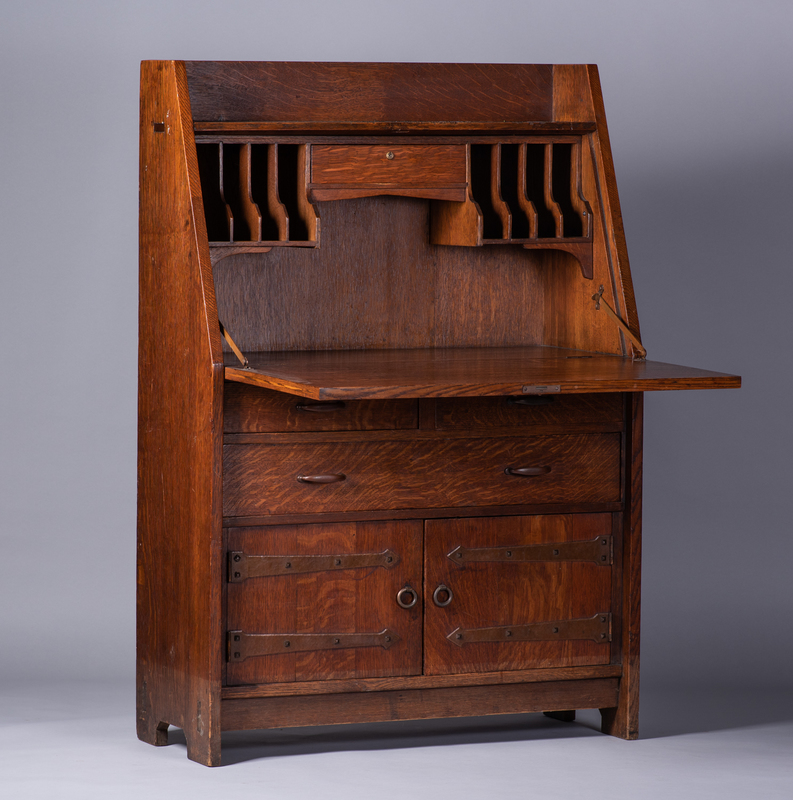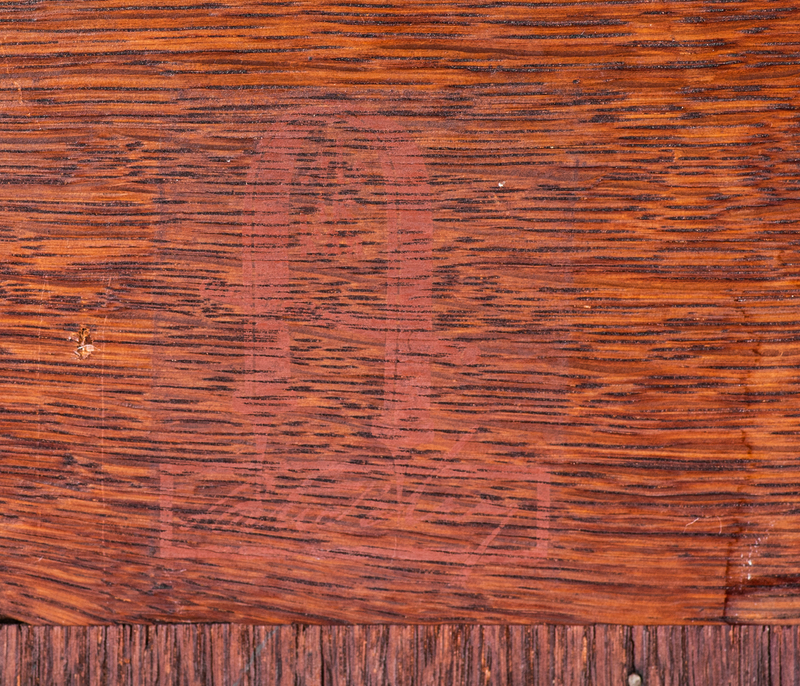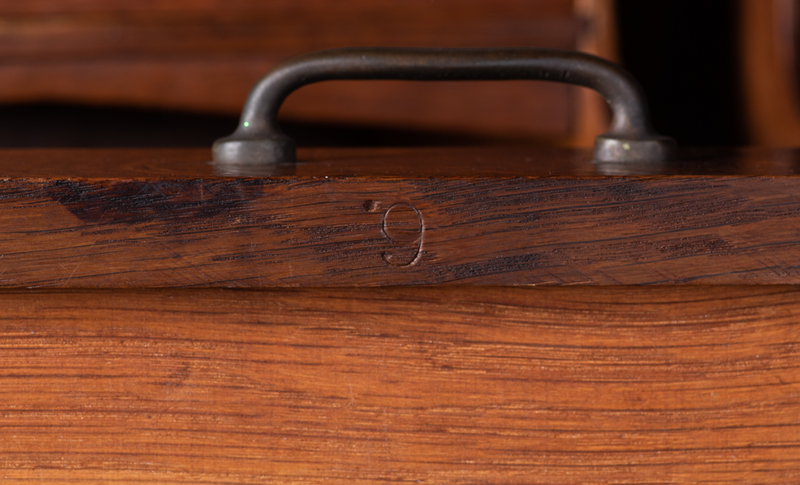Writing Desk (no. 550)
Item
Title
Writing Desk (no. 550)
Creator
United Crafts
Date
1902-04
Dimensions
47 3/4 x 32 3/4 x 13 3/4 inches (closed)
Medium
Oak, laminated wood, copper, iron, brass
Object No.
1997.6
Credit line
Anonymous Gift
Marks
On back: shop mark (decal) in center of top rail; “737/25” in chalk. Small drawer lock stamped “CORBIN / MADE IN USA” in ovals. Drawers are stamped “5” “6” and “6.” on the underside of the front face. These numbers correspond to the numbers stamped on the case, on the rail that faces the drawer sides at the outside edge of the cabinet. The “6.” appears on the left hand side of the case.
Description
One of the most attractive desks that Stickley produced, this model represents a subtle refinement of the previous version (no. 521) towards a more harmonious whole. Although they are configured the same way—two smaller drawers over one that spans the width of the desk, with storage below—the addition of doors covering the lower space and the long, horizontal strap hinges that hold them in place, creates a balance and solidity missing in the earlier example. In addition, by using an interior mechanism to catch the fall front rather than wooden pulls on the outside of the upper drawers, Stickley simplified the front of the desk and allowed for slightly broader top drawers. In keeping with the overall simplification and unity of the form, the large projecting keyed tenons that defined the earlier iteration of the fall front are absent. In their place, a single horizontal through tenon on the top and two vertical ones at the bottom of the sides are cut flush to the surface and add to the sense of refinement.
Like much of Stickley’s earliest furniture he used quarter-sawn oak throughout the desk, even in the drawer sides and backs. Hidden from view on the interior, two horizontal pieces of oak hold the vertical slats of the door panels together attached with iron screws that Stickley patented in 1901. The same mechanism for catching the doors and keeping them closed, essentially a copper ball atop a spring that was mounted into the doors, was used on the somno (no. 618, ca. 1902-03), an example of which is in the master bedroom upstairs.
Like much of Stickley’s earliest furniture he used quarter-sawn oak throughout the desk, even in the drawer sides and backs. Hidden from view on the interior, two horizontal pieces of oak hold the vertical slats of the door panels together attached with iron screws that Stickley patented in 1901. The same mechanism for catching the doors and keeping them closed, essentially a copper ball atop a spring that was mounted into the doors, was used on the somno (no. 618, ca. 1902-03), an example of which is in the master bedroom upstairs.
Provenance
Gustav Stickley (by 1904); sold with the contents of Craftsman Farms in 1917 to George and Sylvia Farny; by descent to Cyril Farny; purchased by an anonymous donor on behalf of the Craftsman Farms Foundation.




